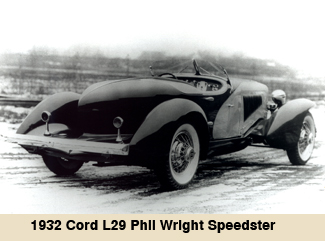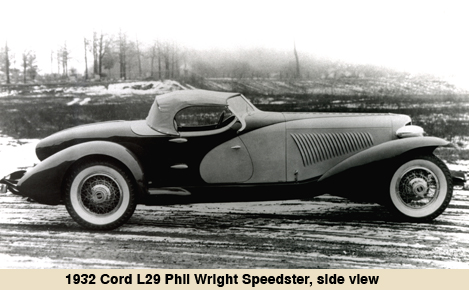Fay Butler Fab/Metal Shaping
From Skiff to Speedster:
A Brief History
|
This year’s concourse theme is coachwork using Skiff and Speedster designs. Many automobile designs can trace their origins back to the carriage industry, but not the Skiff and Speedster. Both of these designs in their style of construction were way too heavy and impractical to even be considered in horse drawn times.
One of the leaders in these new designs was a Parisian named Henri Labourdette. He had been building elaborate wooden boats, now he applied his craft to automobiles. What he created was very distinctive coachwork called the Skiff. These Skiff coachworks by Labourdette were primarily wooden construction, using the finest hardwoods available at that time, usually mahogany. Painted sheet metal was generally used on the fenders and hood, with the inside and outside body being left clear finished wood. The several layers of wood were laminated in a cress-cross pattern for strength, with the outside layer being placed horizontal; having the effect of making the body look longer. These layers were mechanically fastened with hundreds of small brass rivets to vertical reinforcing ribs, placed along the inside of the body. These ribs were usually a contrasting colored wood like ash. The only upholstered areas were the seats, leaving all the inside wood visible. The use of nautical cues, with the mixture of woods and well detailed brass hardware, resulted in visually stunning and sporty automobiles for the time. Many variations can be found till the mid 1920’s, when the ideas took a modern turn, now enters the Speedster. When I first think of the Speedster automobile design, two American automobile designers come to mind; Al Leamy and Phil Wright, with three automobile companies; Auburn, Cord, and Duesenberg (ACD), all under the ownership of E.L.Cord. From 1928 till the mid 1930’s when the E.L.Cord empire fell, these three marques epitomized sporty styling. In 1928 Al Leamy, just 26 years old, became E.L.Cord’s chief stylist for the Auburn Cord Duesenberg company. He had admired the designs of European manufactures such as Hispano-Suiza and Isotta-Fraschini. American automobile design and engineering was still conservative compared to Europe. Engineering often dictated only enough styling to cover the mechanical parts of a car. Mr. Leamy favored lighter colors such as pastels and even in 1933 had two tone pearl paint color schemes available for the Auburn Salon line. He also felt autos should be designed as a total package, both the exterior and interior. E.L.Cord’s desire to build the first American production front wheel drive car, the L29 Cord, was the perfect chassis for exploring these new sporty designs. It was long, low and did not have the problems of the seating package that other cars had with their drive shafts and rear axles. Mr. Leamy started with a high shoulder radiator grill shell blending into a full hood, dramatizing the record performances of the ACD “Lycoming” engines. The overall lower bodies with high belt lines and narrow window openings helped dramatize the overall car length, similar to what Labourdette had done with his long horizontal boards.
With the newly introduced V12 engine in 1932 being offered, this added additional length to the hood, epitomized this design. Add then a great interpretation of the clam shell fenders, and shock waves were sent through the automobile industry, world wide. Now enter a Californian, Phil Wright, who was associated with the famous coach builder, Walter M. Murphy of Pasadena, CA. Phil Wright took the lower stylish L29 Cord that Al Leamy had designed along with his speedster designs for the Auburn and designed a show car speedster for 1932. This L29 Cord speedster known as the “Phil Wright Speedster” was a radical curvy speedster body using pontoon fenders. This car was painted yellow and orange, reflecting the bright colors that Leamy was already using. This car was an international hit and was purchased by the actress, Jean Harlow who entered the car into many concourse circuits both in the US and Europe. The elaborate Skiff and Speedster designs have long since left automobile design. These body styles were much too frivolous, not lasting beyond WWII. Speedsters were merely exercises to get the masses into the show room during a depression era to purchase a less expensive, more practical model. It was too little to late, and almost all the manufactures of these body styles have disappeared today. But for us, this Memorial Day weekend, we get to go back to this era, and view many of these influential automobiles, and wonder, what would these cars evolved to had the respective companies been around today. — Fay Butler |
|
 |
 |
©2005-2007 Fay Butler